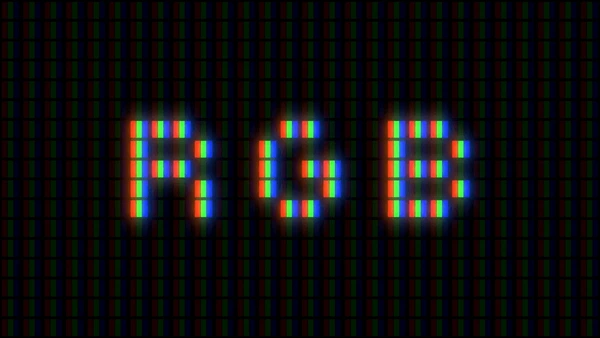
What Is an RGB LED?
An RGB LED is a type of light-emitting diode (LED) that integrates three individual LEDs emitting red, green, and blue light respectively. By combining these primary colors in varying intensities, an RGB LED can produce a wide range of colors, including white light.

Structure and Components
An RGB LED typically consists of the following components:
- A substrate (e.g., sapphire, silicon carbide) on which the LED structure is built.
- A first conductive semiconductor layer (n-type or p-type).
- An active layer, where electron-hole recombination and light emission occur.
- A second conductive semiconductor layer (p-type or n-type), opposite to the first layer.
- Electrodes (anode and cathode) for applying current.
How RGB LEDs Work
When a forward bias voltage is applied across the electrodes, electrons and holes are injected into the active layer, where they recombine and release energy in the form of photons. The wavelength of the emitted light depends on the semiconductor material and the composition of the active layer.
In an RGB LED, each individual LED (red, green, and blue) is designed to emit a specific wavelength corresponding to its respective color. By controlling the current flow through each LED, the intensities of the emitted colors can be adjusted, allowing the RGB LED to produce a wide range of colors through additive color mixing.
Key Features of RGB LEDs
- Color Mixing: By adjusting the relative intensities of the individual red, green, and blue LEDs, a vast array of colors can be produced, including white light when all three colors are balanced.
- High Efficiency and Long Lifespan: LEDs are highly energy-efficient and have a long operational lifespan compared to traditional light sources.
- Compact Size: RGB LEDs can be packaged in small, compact modules, making them suitable for various applications where space is limited.
- Directionality: LEDs emit light in a specific direction, allowing for precise control over the light distribution and reducing wasted light.
- Low Temporal Coherence: RGB LEDs have low temporal coherence, which can be advantageous in applications like augmented reality displays.

Types of RGB LEDs
- Cluster Configuration RGB LEDs: These consist of individual red, green, and blue LED chips packaged together in a single unit or cluster. The configuration and packaging density of the LED chips can impact color uniformity and thermal management.
- Multichip RGB LEDs: These LEDs integrate multiple LED chips (red, green, and blue) within a single package, allowing for efficient color mixing and compact design.
- Vertically Stacked RGB LEDs: In this type, the red, green, and blue emitters are vertically stacked within a single LED structure, enabling precise color control and improved efficiency.
- Hybrid RGB LEDs: These combine organic and inorganic materials, such as colloidal quantum dots (CQDs) and organic emitters, to achieve high-performance and tunable color emission.
Advantages of RGB LEDs
- Color Tunability: RGB LEDs offer the ability to produce a wide range of colors, including white light, by adjusting the intensity and mixing of the individual red, green, and blue components.
- High Brightness and Efficiency: Modern RGB LEDs can achieve high luminous efficacy and brightness levels, making them suitable for various lighting applications.
- Long Lifetime and Low Power Consumption: Like other LED types, RGB LEDs have a long operational lifetime and consume less power compared to traditional lighting sources.
- Compact Size and Design Flexibility: The small size and versatile packaging options of RGB LEDs allow for compact and flexible designs in various applications.
Challenges of RGB LEDs
- Color Uniformity and Stability: Maintaining consistent color and brightness across multiple LED chips or packages can be challenging, especially with temperature variations and aging.
- Thermal Management: The high power density of RGB LEDs can lead to heat dissipation issues, which can impact performance and lifetime if not properly managed.
- Color Rendering: Achieving high color rendering indices (CRI) and accurate color reproduction can be difficult with RGB LEDs compared to broad-spectrum sources.
- Cost and Complexity: The integration of multiple LED chips and the associated control systems can increase the cost and complexity of RGB LED systems.
Applications of RGB LED
Lighting and Illumination
RGB LEDs are widely used for general lighting and illumination purposes due to their ability to produce a wide range of colors and brightness levels. Some key applications include:
- Commercial and residential lighting
- Architectural and landscape lighting
- Stage and event lighting
- Decorative and accent lighting
Displays and Signage
- LED displays and video walls
- Digital signage and billboards
- Traffic signals and indicators
Automotive and Transportation
RGB LEDs have found numerous applications in the automotive and transportation sectors, including:
- Exterior lighting (headlights, taillights, turn signals)
- Interior lighting and ambient lighting
- Instrument cluster and dashboard illumination
Internet of Things (IoT) and Smart Lighting
RGB LEDs are increasingly being used in IoT and smart lighting applications, enabling features such as:
- Visible light communication (VLC) for data transmission
- Energy harvesting and sensing capabilities
- Intelligent lighting control and automation
Horticulture and Agriculture
The ability to produce specific wavelengths of light makes RGB LEDs useful in horticulture and agriculture, including:
- Plant growth lighting and vertical farming
- Greenhouse and indoor cultivation lighting
Medical and Scientific Applications
RGB LEDs have found applications in medical and scientific fields, such as:
- Phototherapy and light therapy devices
- Microscopy and imaging techniques
- Biomedical research and instrumentation

Latest Technical Innovations in RGB LED
Materials and Structures
- Advancements in semiconductor materials and structures for improved efficiency and color rendering, such as:
- Quantum dot (QD) structures for enhanced color purity and brightness
- Nanostructured active layers for increased light extraction
- Phosphor-free RGB LED designs for better color stability
- Novel packaging techniques for better thermal management and optical performance, e.g.:
- Flip-chip packaging for improved heat dissipation
- Encapsulation materials with high refractive index for better light extraction
Driving and Control Systems
- Intelligent driving circuits for precise color mixing and dimming control:
- Advanced pulse width modulation (PWM) techniques for smooth dimming
- Feedback loops for real-time color calibration and compensation
- Integration of sensors and processing capabilities for adaptive lighting:
- Ambient light sensors for automatic brightness adjustment
- Gesture recognition for intuitive lighting control
Light Emission Efficiency
- Techniques to mitigate efficiency droop at high current densities:
- Electron blocking layers to improve carrier injection
- Patterned sapphire substrates for enhanced light extraction
- Advances in epitaxial growth and doping for higher internal quantum efficiency:
- Metal-organic vapor phase epitaxy (MOVPE) optimization
- Delta doping for reduced efficiency droop
FAQs
- How do RGB LEDs create colors?
RGB LEDs use additive color mixing, combining red, green, and blue light at varying intensities to produce a spectrum of colors. - What is the difference between RGB and RGBW LEDs?
RGBW LEDs include an additional white diode for better white light quality, improving color accuracy. - Can RGB LEDs be dimmed?
Yes, RGB LEDs can be dimmed using pulse-width modulation (PWM) or compatible controllers. - Are RGB LEDs energy-efficient?
Yes, they consume less power than traditional lighting while offering brighter and more vibrant colors. - What are addressable RGB LEDs?
Addressable RGB LEDs allow individual control of each LED, enabling advanced effects like animations and gradients.
To get detailed scientific explanations of RGB LEDs, try Patsnap Eureka.

